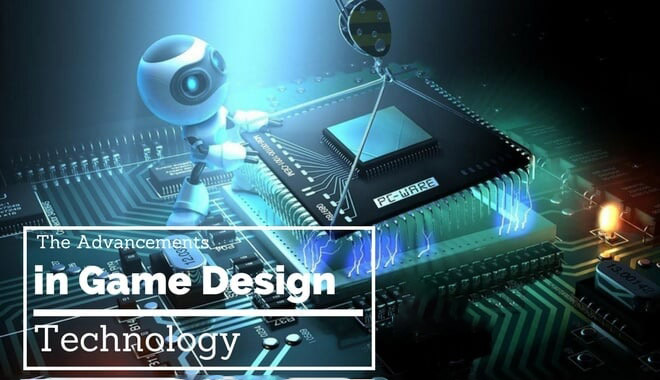Game Design Introduction:
- A compelling introduction that sets the stage for examining the profound impact of emerging technologies on the development of computer games.
- It is important to recognize the rapid advancement of the gaming industry and the impact of technological innovations in driving this change.
- Additionally, it is vital to highlight the importance of staying ahead in the industry by adopting these state-of-the-art technologies.
1. Artificial Intelligence (AI) in Game Design

- AI-Powered NPCs and Dynamic Environments
- Examine the ways in which artificial intelligence is enhancing the intelligence and responsiveness of non-player characters (NPCs), resulting in a more immersive gaming experience.
- Additionally, highlight instances of video games that employ AI to develop dynamic environments that adjust according to player interactions.
- Procedural Content Generation and Personalization
- Artificial intelligence is increasingly employed to create distinctive content, guaranteeing that each gaming experience is unique.
- This technology plays a crucial role in tailoring gaming experiences to align with individual player preferences, enhancing engagement and satisfaction.
2. Virtual Reality (VR) and Augmented Reality (AR)
- Creating Immersive Gaming Worlds with VR
- Virtual reality is revolutionizing conventional gaming by creating fully immersive experiences that engage players on a deeper level.
- This transformation is facilitated by significant technical advancements and the resolution of various challenges within the VR landscape.
- Augmented Reality: Bringing Games into the Real World
- Examine the integration of augmented reality (AR) in merging digital content with the physical environment, thereby enriching the experiences of mobile and console gaming.
- Additionally, provide case studies of well-known AR games and analyze their influence on the gaming industry.
3. Cloud Gaming and Streaming
- The Shift to Cloud Gaming
- Cloud gaming is revolutionizing the accessibility of premium gaming experiences by significantly reducing the need for expensive hardware. This advancement enables a wider audience to participate in high-quality gaming without the financial strain associated with acquiring sophisticated gaming consoles or personal computers.
- Furthermore, it is essential to evaluate both the advantages and obstacles that cloud gaming presents for both developers and gamers. While developers can tap into a broader market and lower distribution expenses, players might encounter difficulties such as latency issues and dependence on reliable internet connectivity.
- Interactive Game Streaming
- Investigate the impact of game streaming platforms such as Twitch and YouTube Gaming on the development of video games.
- Additionally, discuss the social and interactive features that streaming introduces to the overall gaming experience.
4. Ray Tracing and Advanced Graphics
- Pushing the Boundaries of Visual Realism
- Examine the importance of ray tracing in achieving realistic lighting and reflections within video games.
- Emphasize the contribution of emerging graphics technologies in improving the overall visual fidelity of gaming experiences.
- Innovations in Hardware and Game Engines
- Investigate the most recent developments in gaming hardware and software that facilitate the creation of more intricate and detailed game environments.
- Additionally, present examples of games that are at the forefront of graphical excellence.
5. Cross-Platform and Mobile Gaming
- The Growing Demand for Cross-Platform Play
- Examine the emergence of cross-platform gaming and its impact on the development and gameplay of video games.
- Additionally, investigate the technical and design obstacles associated with creating fluid cross-platform experiences.
- The Evolution of Mobile Gaming
- Analyze the advancements in mobile technology that are expanding the potential of mobile gaming.
- Explore the growing significance of mobile games within the larger gaming landscape.
6. Block chain and NFTs in Gaming
- Play-to-Earn Games and Digital Ownership
- Block chain technology has surfaced as a revolutionary element within the gaming sector, enabling the creation of play-to-earn frameworks that allow players to receive rewards for their engagement. This groundbreaking strategy not only improves player involvement but also brings forth novel economic dynamics within gaming ecosystems.
- Additionally, non-fungible tokens Non-fungible tokens (NFTs) are revolutionizing the concept of digital ownership by allowing players to possess unique in-game assets that can be traded or sold. This development is enhancing in-game economies and expanding avenues for monetization within the digital realm.
- Controversies and Ethical Considerations
- Discuss the potential downsides and criticisms of integrating block chain and NFTs in games.
- Explore the ethical implications and future prospects of these technologies in game design“Revolutionizing https://awebtech.co/what-is-new-in-g…ology-jogametech/ : How Technologies are shaping Future of Gaming”.
7. The Role of Machine Learning and Big Data
- Enhancing Player Experiences through Data Analysis
Examine the application of machine learning and big data in the analysis of player behavior and the enhancement of game design. Illustrate with examples how insights derived from data are influencing the development of in-game content and features.
- Predictive Analytics in Game Development
Investigate the role of predictive analytics in enabling developers to anticipate trends and player preferences, resulting in more focused game development efforts.
Conclusion
The article highlights the significant advancements in technology that are revolutionizing game design. This underscores the considerable influence of these innovations on the creative process and the imprhttps://awebtech.co/what-is-new-in-g…ology-jogametech/ ovement of player experiences. Looking ahead, the gaming industry appears to be on a favorable path, with these technologies poised to further develop and influence the sector.
